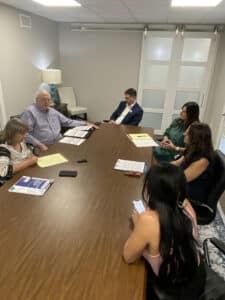
Local Realtors participating were:
Tim Castle: president of SWLA Realtors Assoc.; Broker & Realtor of Castle Real Estate; 35 years’ experience.
Summer Boudreaux: five years’ experience; director, SWLA Realtors Assoc.; Castle Real Estate
Phyllis Loftin: Realtor at Latter & Blum for over 13 years.
Pat Diamond: 52 years’ experience; Broker & Realtor, The Diamond Difference RE/MAX
Diana Vallette: The events of 2020 and 2021 touched every aspect of life in Southwest Louisiana, but none more so than the real estate market. How did the market respond to COVID, two hurricanes, an ice storm and a flood?
Tim Castle: Let’s start with COVID. During the COVID pandemic, people didn’t want others coming into their homes, so showing properties was a challenge. We were taking a lot of videos and posting them on social media so the public could view homes that way. Video viewings are an industry standard now. Once we got through COVID and figured out everybody was going to be OK, the market kept on going. We started seeing a lot of cash coming into the market during that time because of government subsidies for families. Loans were available, and cash was moving.
Phyllis Loftin: As Tim said, people were very leery about letting other people enter their homes. But I sold more during COVID than I have in 14 years in real estate. COVID didn’t slow me down at all. I think it gave people a heightened awareness of their surroundings and how important it is for your home to be user friendly and have all the amenities you need — entertainment for children, backyard entertainment, pools. So, I think COVID had a very positive impact on all aspects of the real estate industry.
Tim Castle: Our area is resilient when it comes to natural disasters. COVID was like a hurricane sitting on the entire nation. Our area knows how to rebound from that. Something may knock us down, butwe’re going to keep doing what we do. And Hurricanes Rita, Ike, Laura, Delta and the other disasters were just simply cogs in the wheel, and we kept trucking.
Pat Diamond: During COVID, because so many people were working from home, they began to look at how they were using their space. For a long time it seemed like everybody wanted an open floor plan, but when people started working from home, suddenly they wanted more private spaces where they could work. I’m sure all of you experienced a Zoom call at one time or another during COVID where you had to deal with kids running through the background or the cat walking across the screen. People realized that having everything open wasn’t working, and they wanted things laid out a little differently. On top of that, interest rates were favorable, and that gave people options. COVID really didn’t slow us down at all.
Summer Boudreaux: Yes, COVID had an extremely favorable effect on the market. It created more buyers, but it also created an inventory shortage. So many people realized that their home wasn’t what they truly needed. So everybody started buying and selling. I think that’s what first kicked off our inventory shortage. That’s the only negative impact I saw from COVID, and really it was a challenge more than a negative.
Diana Vallette What about the hurricanes, the ice storm and the flood? How did they impact the market?
Pat Diamond: The storms of 2020 were far and away the worst we’ve ever had here. I’ve done storm damage appraisals since the 1970s, and the damage from Laura and Delta was the worst I’ve seen. Most of the adjusters that came into our area had never seen anything like it. Those storms put us into an acute inventory shortage because you had people who were buying anything just to have a place to stay.
Diana Vallette: Was it the worst inventory shortage you’ve seen?
Summer Boudreaux: It was the worst I’ve seen.
Pat Diamond: I think it’s probably the worst I’ve seen in my career. We simply had so much damage. Around 80 percent of homes in the area were damaged in one way or another. Everyone was doing repairs. Look around; we’re still doing repairs.
Tim Castle: You have to remember that Laura came directly over Lake Charles. Everything else had been a sideswipe or a near miss. Everyone seemed to want to compare Hurricane Laura to Hurricanes Rita and Ike because those two storms had been this generation’s only experiences. They were completely different. The damage from Laura was very large-scale. Another thing that was different is that we had a number of residents from outside the area. It wasn’t like the early 2000s when the population was mostly native residents. When the casinos opened and local industry expanded, people moved in who’d had no prior hurricane experience; after Laura, they wanted no more of it. On top of that, the apartment complexes were damaged, so these people didn’t have a place to live. We had a population loss after Laura of about 10 to 15 percent, I think.
Phyllis Loftin: I think, too, that the hurricanes drove the price of real estate really high — to an all-time high in our area. After Laura and Delta I was able to sell my home for $308 per square foot. Those numbers were unheard of then, but they’re the norm now, especially in the 70605 zip code — South Lake Charles, Graywood.
Tim Castle: If you remember, COVID created a lumber shortage. The price of building materials skyrocketed. Then we had the hurricanes. It was the perfect storm, no pun intended. Prices skyrocketed, and interest rates were still at around 2 or 3 percent, so it was easy to get a loan.
Phyllis Loftin: People were buying homes that weren’t damaged just to get their families back in Lake Charles. Now those same people are listing their temporary homes because their original homes are repaired. I showed one yesterday for a local doctor. So like I said, COVID was one of my busiest times. Production was just off the charts.
Summer Boudreaux: I think the hurricanes and COVID combined to create a big housing need and, on top of that, money was liquid. I think those two factors created a tiny bit of a false market. Before, people would look closely at the worth of a homeand consider what it would appraise for. Suddenly that didn’t matter. People had to have a place to live, and they were willing to throw an extra $30,000 in to beat other offers. We have to deal with the effects of that false market today because people are still expecting prices to be like they were.
Tim Castle: We were hopeful that the market would recover quickly because that was our experience after Rita. But after Rita, insurance companies paid claims quickly. That didn’t happen after Laura. So, after Laura, we kept telling our clients it was going to be OK, the insurance companies were going to pay, but they didn’t. After Rita, Pat and I had a very liquid market. People were dropping cash and buying what was available because insurance paid within 30 days. After Laura, the process was delayed. People were having to sue their insurance companies for non-payment. And that’s been holding us back. A lot of people don’t have the resources they need to repair their homes.
Pat Diamond: We were talking about how good the market got after Rita, but in reality, when you go back to 2020 and 2021, that’s where our market really picked up. As a matter of fact, the average home sale price jumped from $216,000 to about $235,000 in one year, which is a pretty big jump — almost 9 percent.
Usually Lake Charles is not one of those markets that has very big spikes or drops. From 1989 to 2022, there’s been an average increase of about 4.35 percent in average sales price per year. That’s not a huge run up.
Diana Vallette Where do we stand in 2023?
Phyllis Loftin: I think sellers have the same expectation today as they did in 2020 and ‘21, and we’re in a totally different market today. They have to process and understand that. We’ve had to convey that to them and show them on paper, because most of them are visual and they want to actually see it instead of just talk about it. It’s very challenging for us as agents. We have to keep telling sellers to drop the price. That’s not what they want to hear, but it’s what they have to do. In addition to that, with interest rates as high as they are, Generation X is totally out of the buying market. They bought much bigger and more expensive homes than they could actually afford because interest rates were so low. Now they’re married to those mortgages for 30 years. They’re never getting out ofthose homes because that would mean regressing instead of progressing. That took a huge chunk of buyers out of the market. We’re not getting those buyers back in the market — not in my lifetime.
Pat Diamond: About 35 percent of our market is millennials, aged 23 to about 38. And typically this is the age at which you buy your first house. The problem is that only a very few of that group are trying to buy a house. The rest of them will all wait until the interest rates come down.
Diana Vallette So are homes staying on the market longer now?
Pat Diamond: Comparing the first nine months of 2022 to the first nine months of 2023, the average has gone from 55 days on the market to 72 days, and the number of sales is down by 26.4 percent. Total sales dropped from 2,355 to 1,733. As I said earlier, we’re getting back into a normal market. The problem is that a lot of people don’t know that and they’re not being told that. They’re hearing on the national news that prices are coming down. But they’re not coming down everywhere in the country. As a matter of fact, our average sales price for the first nine months of this year is actually up 2.6 percent compared to last year.
The big thing is the change in interest rates and insurance rates. Those are the two things that are hurting our market right now. I hate to say it, but interest rates aren’t going to come back down to 3 percent anytime soon, not during my career. They’re probably going to hover between 6 and 7 percent over the next two or three years. As Phyllis said, a lot of people in the last eight to 10 years bought homes they really could not afford in the 3- to 4- percent interest rate range. And what’s happening now is we don’t have buyers that can come in and
purchase those homes. Nationally, 65 percent of mortgages are below 6 percent. The residential market has never been a market that’s driven by the money market. It’s always been driven by what a family needs at any given point in time. People get married, people get divorced, they have more kids, the kids leave home. You can put that need off for a while, but eventually you have to make the move. People are starting to realize they won’t be able to buy what their parents bought right off the bat — that they’ll have to settle for a little less to start out. Probably within the next eight to 10 years we’re going to have a group of buyers that have had to let the market catch up to them because they overbought.
Summer Boudreaux: And having insurance double and triple was something those buyers didn’t expect when they were purchasing.
Tim Castle: Phyllis is correct in that the value of homes increased because of low interest rates. You create a demand and that drives prices up. In my opinion, we probably had a 20 percent interest rate fluff in the market. As the interest rates were low, prices just kept driving up. Couple that with building costs, labor costs, the hurricane, and changing needs, that’s all going to have to come out. It’s just like the big short we had in 2008. We were financing 100 and 107 percent of homes. We created those shorts. We all knew it had to come out of the market eventually. Sellers will tell us, “but, John and Sally sold their home for this price.” Well, yes, but that was two years ago. Also, look at your interest rate and look at theirs. They bought that home at 2.5 percent. Do they want to sell their home to you at that price? No, they don’t want to give up their mortgage. That is the market correcting itself. So when you compare an increase or a decrease, look at your overall volume. Pat tells us the volume was greater here, the volume is less here. You can still see a statistical increase, but it’s based on a much smaller volume.
Pat Diamond: The thing about it is that the dollar volume of sales is down, but only by 20 percent. In other words, price is not dropping as much as you would think.
Tim Castle: Correct. Also, with our inventory, if you put out junk, you’re not going to sell it. If you put out a good-looking, turnkey home you’re going to sell it quickly, because right now buyers don’t want to deal with repainting, redoing the floors, or landscaping. You’d better mind your Ps and Qs when you list a place.
Summer Boudreaux: I’ve noticed in the last six months or so that the DIY people are starting to come back into the market. They want good bones — they don’t want floors falling apart and they don’t want to replace a roof, but they’re fine painting or changing a light fixture or repairing a faucet in order to get a house they like and save a bit of money. Interest and insurance rates have gone up so much that we’re starting to see those HGTV viewers come back into the market.
Pat Diamond: Building material costs have started to moderate a little bit. Supply chains are getting better all across the country, and that’s what’s bringing those people back in. They don’t have to pay $15 per sheet of sheetrock.
Summer Boudreaux: They’re getting better insurance rates on new builds than they are on older homes, too, and I think that’s influencing decisions.
Tim Castle: And new construction methods are better. Homes are built with a higher wind rating.
Diana Vallette Other than having their home look nice, what is it you suggest sellers do to get the most out of a sale?
Phyllis Loftin: Two or three years ago, when I would do a market analysis and present it to a seller, I did my analysis at a low, medium and high range. Then I’d tell the seller, “this is the low price, medium price and high price. I suggest we list at about 10 percent above this high price because that’s what we’re going to get for it.” Now, I tell them we need to list it about 10 percent below the medium price. And if we don’t get a contract within 30 days, we’re adjusting it closer to that low range. I find doing the low, medium and high range is the best way to get the attention of a seller and show them what it’s going to take to sell that home.
Diana Vallette How is that usually received by the seller?
Phyllis Loftin: Obviously, there’s disappointment, but the general state of our economy helps them appreciate what I’m explaining to them. My husband and I own several local businesses. Everything’s down in this economy, no matter what the business is. And people are scared to spend money right now.
Tim Castle: One thing that we have to point out to our customers is that through these periods of inactivity, you have to pay close attention to your comparables. Pat taught all of us very well that you can only look back six months.
Phyllis Loftin: I show my sellers what they’re competing with in the market, what’s active right now. I tell them that if they want to sell their house, if they have to sell their house, they have to go outside their comfort zone and list right under those houses they’re competing with.
Tim Castle: The value of a realtor is that we can generally determine if our competition is in distress. You have to pay attention to that because we’re going to start seeing more distress in the market, and that’s going to have an effect as well.
Phyllis Loftin: I’ll give you an example of that. The 70607 ZIP code has the highest insurance rate of any ZIP code in our area. If you buy a 10-year-old, $250,000 home in 70607, your insurance rate is going to be higher than if you buy that same home in the 70605 ZIP code. We can attribute that to 70607 having the most claims of any ZIP code in our general area after the storm, so insurance companies had to pay out the largest amount of claim money in that area.
Tim Castle: That area was on the eastern edge of the storm.
Phyllis Loftin: And there’s a very high inventory in that area. You have Morganfield. Iowa has really boomed. There’s a lot of homes being built there. On the other hand, there’s nowhere left to build in 70601.
Tim Castle: People are asking me what this homeowners insurance crisis is like. I tell them to remember when they bought their first car and their parents told them “Whatever you do, do not get into wreck,” because if they did, their car insurance would be unaffordable. That’s what it’s like. We file a claim on our homeowner’s insurance and suddenly we can’t afford homeowner’s insurance.
Diana Vallette And we’ve had about three wrecks in the last couple of years.
Tim Castle: And you never think it will happen to you as a homeowner because it’s not supposed to. But it’s happening now.
Diana Vallette What about buyers? What are buyers experiencing?
Phyllis Loftin: I’m closing a deal in the next couple of days. It’s a couple in their late 20s. Both have really good jobs, both graduated from college. We got them pre-approved around the first of the year for up to $250,000. We’re closing on their home at $190,000. The change in the interest rate moved their pre-approval and their monthly budget down. They could not buy anything over $200,000.
Tim Castle: Now we have to check and see if homes are in a flood zone and what the insurance rate is because the escrows could potentially mess things up. If you have private mortgage insurance you have four escrows coming into a deal.
Pat Diamond: And buyers are starting to see this. The moment we have our first consultation with our buyers, we tell them they need to start looking into insurance because it’s going to be a big part of their budget.
Phyllis Loftin: I’ve been doing this for 14 years, and I never shopped insurance rates during an inspection period before. Now it’s the very first thing I do, because insurance will kill a deal. My assistants send the information to an agent and we get a quote immediately. It’s probably not the quote my clients want to see or the agent that my buyers want to use, but at least it’s a baseline that we can work from.
Summer Boudreaux: I think now buyers have a little bit more negotiating power than they’ve had in the past three or four years because homes are sitting on the market a little longer. So buyers have the ability to ask for closing costs and find the home they really want. They don’t have to just throw out an offer because there are 30 other offers on the home.
Pat Diamond: I think buyers’ agents need to be very, very frank with their buyers in terms of their offer and the value of the home. We just had an offer come in on one of our listings and it was $40,000 below the listing price. The home was listed at $200,000, and they offered $160,000. I recommended the seller counter it with $240,000. If a listing agent does their job correctly and prices a home right, it should be priced very close to what it will sell for. What’s happening is that buyers are seeing on the national news that prices are coming down. So they think they can throw these low offers out there.
Summer Boudreaux: Buyers are seeing prices come down, but a lot of our sellers are stuck in 2021 and they’re not listening to their agent when we tell them they need to sell in the low to medium range. I’ll tell them a certain price is where they need to be if they want to leave some room for concessions like closing costs. They’ll tell me their neighbor sold their house in ’22 for this much.
Phyllis Loftin: I think that we’re in a market right now where cash is king. As agents we have to be able to convey the value of a cash offer, with a quick close, even if the offer is on the lower side.
Pat Diamond: When we’re doing our market analysis, I think one of the keys is the seller’s motivation. What is their situation? What’s motivating them to sell? What will happen if they don’t sell? Once you know the motivation, you can get it priced right. We always have a range, and for years we never went outside of that range. But back then we also sold homes almost immediately and usually at list price or better. Now we need to ask sellers how soon they need the deal to happen and tell them we need to get it down at this price range if it’s going to sell quickly. You have to explain to a seller that real estate markets are, first, local and, second, time sensitive. Markets change from day to day, week to week, month to month.
Diana Vallette It sounds like your clients are now requiring more counseling from you. Is that accurate? Are you having to walk them through the market and explain what is realistic in a way you didn’t have to before?
Tim Castle: I think all four of us do that already.
Phyllis Loftin: It’s just a different explanation now.
Pat Diamond: About 80 percent of the business is done by 20 percent of the agents, and those agents are doing it right. They’re counseling their clients, they’re showing them what needs to be done and how. Those agents are always trying to educate their clients so they can make good decisions. When that happens, it’s a win-win situation, and the client gets their home sold at a reasonable price.
Phyllis Loftin: You’re also establishing what you hope will be a long-term relationship. That’s what I tell every single person that I come into contact with. I’m not an agent that is just looking to sell you a house. We’re interested in forming relationships. I’m going to hold your hand, and after we’ve walked away from the closing table you’re going to continue to hear from me. This is a relationship. It’s not just a deal.
Pat Diamond: And that’s how all of the top agents run their business.
Tim Castle: I know Phyllis’ clients. I know Pat’s clients. And I know Barbara Diamond’s clients. We cooperate well with each other. We work together. I may be helping Phyllis, but at the same time I’m helping the industry as a whole.
Phyllis Loftin: We’re coworkers. We’re not adversaries. Yes, we’re different brokers, different agents, but all collectively coworkers.
Summer Boudreaux: And we learn from each other. I’m the newest agent in this room, and I don’t look at the others as my competition. I’ve learned a tremendous amount from them.
Diana Vallette: Would you guys say we are in a buyer’s or seller’s market?
Pat Diamond: We’re more in a neutral market. Typically, about four and a half months of inventory is the middle of our market; that’s a neutral market. When we get below three months, we’re in a seller’s market. When we get above six months, we’re in a buyer’s market. I think just a week or so ago we had five months of inventory.
Summer Boudreaux: I feel like we’re leaning towards a buyer’s market.
Pat Diamond: Leaning, yes, but not there.
Diana Vallette: What are some of the biggest areas of growth and development in Southwest Louisiana? Where are people buying and building?
Pat Diamond: A lot of it seems to be moving east. There are several reasons for that. If you look at the topography of the area, you’ll see that Cameron is basically on a little ridge that is 3 feet above sea level. When you get up to just South of Lake Charles near Ham Reid Road, the elevation is almost 25 feet above sea level. Then it drops back down. Downtown is about 12 feet above sea level. With the problems with flood insurance, a lot of SW Lake Charles is almost impossible to develop anymore. We’re seeing a lot of development along the east over towards Iowa. Twenty years ago I wouldn’t have thought that area would develop as much as it has. All of that is because our flood insurance rates are outrageous.
Also, we have had several charter schools built in that area recently. You’re going to see movement in that area and probably a good distance to the east.
Phyllis Loftin: I was always waiting for that area to develop because land acquisition costs there were significantly less than in South Lake Charles.
Pat Diamond: It started changing back around 2000. I bought land on East McNeese Street and built out there, and there was almost nothing there at the time.
Phyllis Loftin: I think the same can be said about Moss Bluff. The cost of land has really led to a huge development out there. It’s much less there than in 70605 and downtown. There’s really no land left downtown.
Diana Vallette: Where do you all see the real estate market going in the future? How will things evolve in the next five to 10 years?
Pat Diamond: I think we’re getting back to a normal market. It’s probably going to take a year or two to really pick back up to a level we would like to see it at, but I think that’s going to happen. Again, the public has to understand what has occurred. As much as we enjoyed the low interest rates for a while, it was an abnormal market. We’re still trying to figure out how to keep things on an even keel, and we’ll probably still have some little ups and downs. Our market has always been one that has a tendency to go up for two or three years and then slack off for a year. Every 10 years or so it goes down for two or three years straight. It happened in the mid ‘80s. It happened around 2000. It happened in the financial crisis of 2008-2010.
Tim Castle: I think it’s going to change as the next generation of buyers come in. That’s a very experience driven group of buyers.
Diana Vallette What age group are we talking about?
Phyllis Loftin: Millennials and Gen Xers, 23-58, roughly.
Tim Castle: Locally we are very blue collar, industry driven. When the casinos opened up it helped our real estate market. Then we had the credit crunch. But at the same time we were coming out of Hurricanes Rita and Ike. So that kind of pushed us through 2008 and 2009. Then about 2010, we started hearing about the LNG facilities coming online. We’re at a stagnant point right now. I think a lot of the future depends on what happens with the LNG facilities. In fact, I saw in the paper today there’s another three-year delay on the new LNG project. What’s coming up? What’s going to be the catalyst that helps us come out of this? I think it’s the LNG project.
Summer Boudreaux: I think it’s LNG, as well. I think for the first time in my lifetime I’ve seen all areas of Southwest Louisiana developing in a more positive way than they have before. And I think that’s the silver lining of the storms. This entire area is getting better. We’re cleaning up and developing in an exciting way that I haven’t seen before. Sometimes bad things lead to good things.
Tim Castle: The mayor’s proposal with LC REBOUND has the potential for a very high quality of life for Lake Charles residents. Lake Charles could potentially look different than what we’re used to, and that will have a positive impact on us. How that will affect the real estate market I don’t know. I think we have some new schools being built, we have good schools, they’re improving. Those are important factors, yes, but I think as an industry-driven area, we need good industry news.
Pat Diamond: Going back to the mid ‘80s, Lake Charles had a one-dimensional economy. It was all petrochemical. You had smaller segments with other things, but they weren’t significant. Since then, we have seen our economy start spreading out. Before the casinos came, how many hotels did you have in Lake Charles, four or five? Now look at how many we’ve got. Now our economy is based in five general areas. We still have petrochemical, which would include LNG. We have the gaming and hospitality industry, we have education — McNeese and Sowela. We have healthcare, and we have aerospace with Chennault. I think we’ll continue to look at ways to support these industries as well as pick up newer industries. And we’ll stay insulated. We don’t fluctuate as much as other areas.
Summer Boudreaux: We’re in an economic bubble, it seems like. We’re insulated from the rest of the nation.
Pat Diamond: Remember the big billboard in the late ‘80s that said “last person out of Lake Charles turn out the lights?” Citgo had shut down a plastic plant that they hadn’t even opened yet. They laid off 834 people, and that was just devastating to our economy at the time. That’s why I always remind clients that markets can change overnight.
Diana Vallette: What’s one thing you wish everyone knew about real estate in southwest Louisiana.
Pat Diamond: Get a good real estate agent to work with you — one with knowledge about the market and one that’s willing and able to give you the information you need to make good decisions.



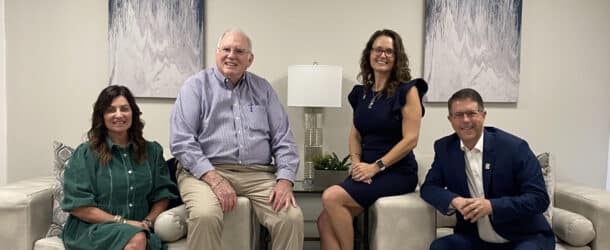
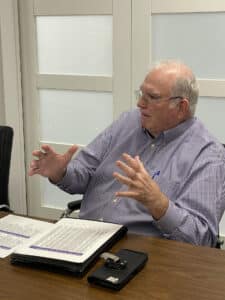
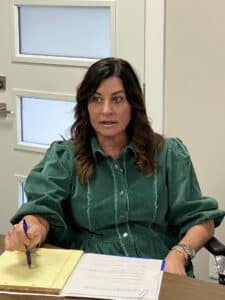
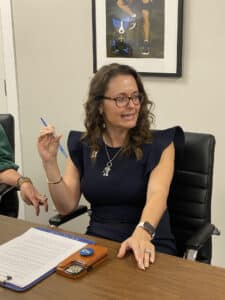
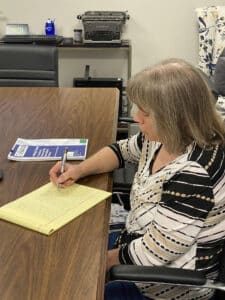













Comments are closed.